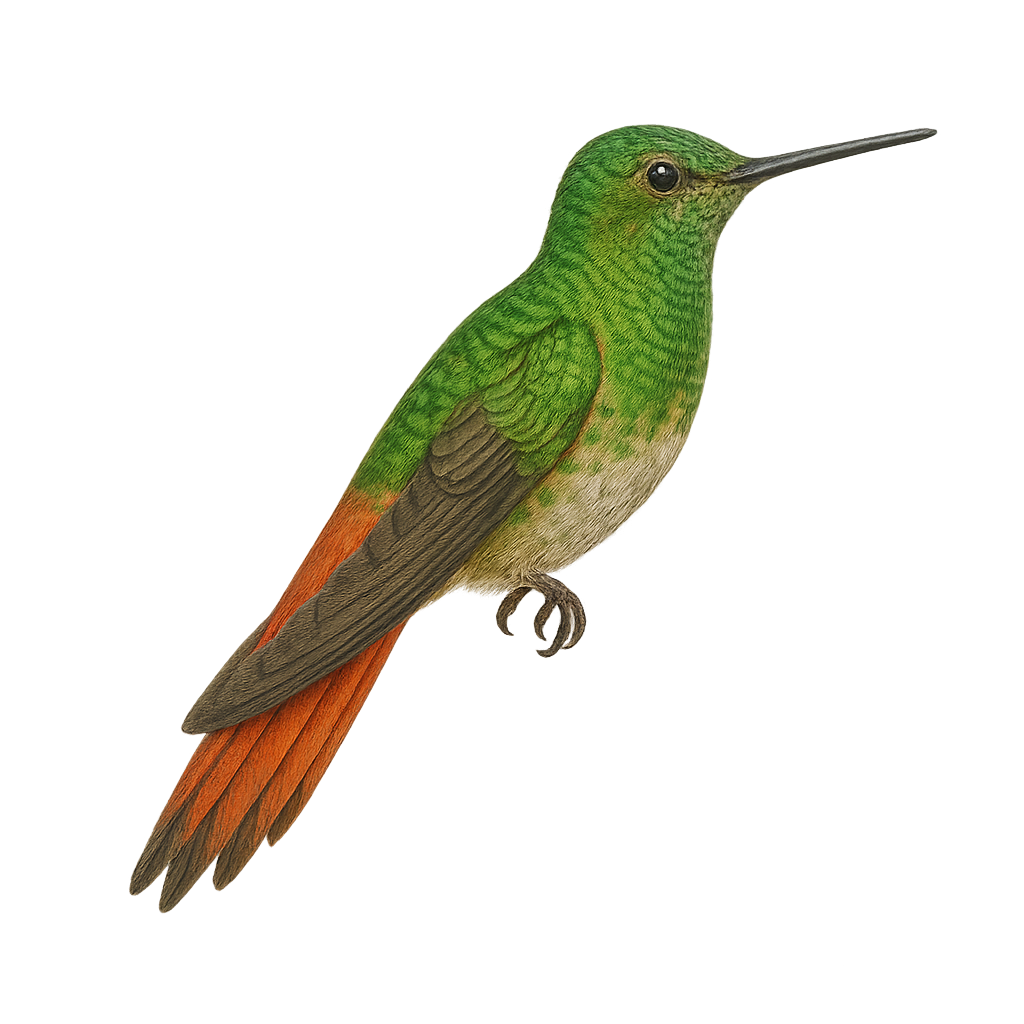Your wildlife photography guide.
Explore the red-tailed comet in detail, study its behavior, prepare your shots.
Where to observe and photograph the red-tailed comet in the wild
Learn where and when to spot the red-tailed comet in the wild, how to identify the species based on distinctive features, and what natural environments it inhabits. The WildlifePhotographer app offers tailored photography tips that reflect the red-tailed comet’s behavior, helping you capture better wildlife images. Explore the full species profile for key information including description, habitat, active periods, and approach techniques.
Red-tailed Comet
Scientific name: Sappho sparganurus

IUCN Status: Least Concern
Family: TROCHILIDAE
Group: Birds
Sensitivity to human approach: Suspicious
Minimum approach distance: 5 m
Courtship display: October to November
Incubation: 15-17 jours
Hatchings: October to December
Habitat:
Open forests, flower gardens, forest edges
Activity period :
Primarily active during the day, with peak activity in the morning and late afternoon.
Identification and description:
The Red-tailed Comet, or Sappho sparganurus, is a fascinating hummingbird known for its spectacular tail and vibrant colors. Native to the Andes, it is distinguished by its iridescent plumage, with shades of green and red. Males boast a long, forked, reddish tail, while females have a shorter, less colorful tail. This hummingbird is often seen in flower gardens and open forests, where it primarily feeds on nectar, playing a crucial role in pollination. Its fast and agile flight allows it to escape predators and vigorously defend its territory. Although its habitat is relatively stable, it remains vulnerable to environmental changes.
Recommended lens:
400 mm – adjust based on distance, desired framing (portrait or habitat), and approach conditions.
Photography tips:
To photograph the Red-tailed Comet, it is advisable to use a telephoto lens of at least 400mm to capture the details of its iridescent plumage without disturbing it. The best opportunities arise early in the morning or late in the afternoon when natural light highlights its vibrant colors. Be patient and discreet, keeping a distance of at least 5 m to avoid scaring it. Use a tripod to stabilize your camera and achieve sharp images, especially when shooting in flight.
The WildlifePhotographer App is coming soon!
Be the first to explore the best nature spots, track rutting seasons, log your observations, and observe more wildlife.
Already 1 431 wildlife lovers subscribed worldwide

